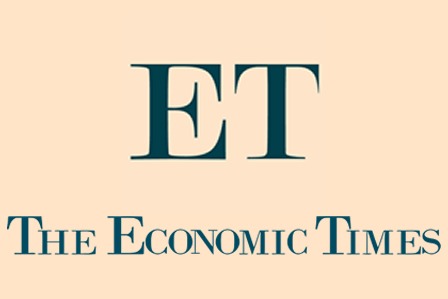Growth and Budget targets stand to be undermined by the perceived dither in governance
As per the Budget estimate, India’s fiscal deficit will be 4.6% of GDP and total borrowings will be . 3,43,000 crore. Both these targets are likely to be exceeded. First, the revenue side depends critically on 9% GDP growth and this will likely not be achieved. Most independent forecasts are now around 8%. Then there is the iffiness about the monsoons. We also can’t assume that 8% growth of the last two years will just continue. It was largely driven by deficit spending, with the fiscal deficit doubling from 3% of GDP to 6%, an increase of a whopping . 2.5 lakh crore. Therefore, almost 3% of our GDP growth came from higher government spending backed by borrowings from the market. This increased the country’s overall debt level from 72% of GDP to 78% over two years. Higher debt reduces our economic flexibility to withstand any future economic shocks.
Second, on the income side, there is a hefty . 40,000 crore built in on account of divestments which may fall significantly short. Last year, we managed only . 22,000 crore when there were record FII inflows of $29 billion. This year will see reduced FII inflows as the sentiment is that the India story has run into the triple whammy of high oil prices and inflation, high interest rates and relative overvaluation against other emerging markets.
Thus, there will likely be a shortfall on the revenue side. The expenditure side is a bigger worry as the increases forecast are rather small. Last year, we had a deficit of 5.1% — excluding the 3G auction revenues, it was closer to 6.5% — or almost 1% higher than the original forecast. Most of this increase came out of a supplementary grant that was as an addendum to the Budget when it became apparent that there would be a substantial windfall on account of 3G. Nevertheless, we are starting from a position of softness as far as expenditure management is concerned. It is hard to believe that a government that has consistently shown high fiscal deficits on the back of lax spending controls will suddenly rein in its basic taxand-spend instincts and turn thrifty. Every political challenge and election thus far has been bravely met with further largesse and entitlement programmes.
Specifically, the Budget assumes that spends on subsidies, including MGNREGS, fertiliser, food, oil under-recoveries, interest costs, agriculture and rural spends, etc., will remain flat. In addition, it has assumed oil prices at $84. Every extra $10 in oil prices increases the government’s borrowing requirements by . 36,000 crore and the fiscal deficit by 0.3%. Given all this, chances are high that the fiscal deficit will be overshot and, therefore, borrowings of . 3.43 lakh crore will also be exceeded.
Meanwhile, inflation of almost 9% implies interest rates of well over 11-12%. These rates are by themselves sufficient to choke growth in the medium term. Remember, when we last had these rates, growth was about 6%. The acceleration to 8% happened only when rates had come down to 5-6% for two to three years in the middle of the last decade. Also, remember that the acceleration happened with a lag of two to three years — therefore, expect that structural deceleration in response to higher interest rates will also happen with a lag. High interest rates gnaw away at the vitals and the vitality of an economy impacting both the demand and supply side. Consumers will soon begin to balk at financing homes and durable purchases, and corporate will not want to borrow to fund projects, fewer of which will remain viable. Similarly, as deposit rates increase, the marginal money will find its way into the deposit market rather than the stock market.
The founding base for interest rates is inflation, which itself depends on supply-demand mismatches, upon which is layered the government’s borrowing programme. As the government continues with the disequilibrium of pumping deficit money into the economy, thereby creating demand for consumer goods, while at the same time not creating a conducive investment environment, inflation will be created. Couple that with high food prices as a result of mismanaged policies, and high oil and commodity prices — it explains why base inflation rates are so high. The least the government should be doing is to borrow as little as possible and so create as little pressure on real rates as possible. The market has clearly discounted the 4.6% fiscal target, expecting it, along with borrowings and interest rates, to be much higher.
This is bad news for investments and corporates. The latter will be squeezed between the double hammer of slower top line growth on the one hand, and higher wages, interest rates and input costs, on the other. Earnings growth will slow. And investors will remain cautious. Keep in mind that of the improvement in the tax-to-GDP ratio, almost 80% has come from the corporate sector due to improved bottom lines. If this is hit, it will again impact the fiscal deficit, increase government borrowings and thereby interest rates — thus moving the economy into a negative spiral.
Everything is thus linked and interconnected and based on expectations. Once the stars align, and it takes several years of hard policy work for this to happen, we move into a virtuous cycle of low inflation, low interest rates and high growth. However, if there is drift, policy paralysis or quite simply, wrong policies, quite the reverse can also happen — and it may just be that we are at the beginning of the unravelling of our virtuous cycle. Unless the government takes quick action.
Source: Economic Times



